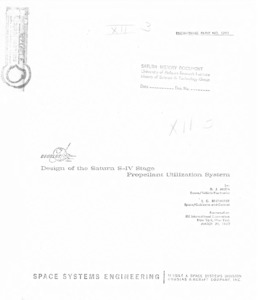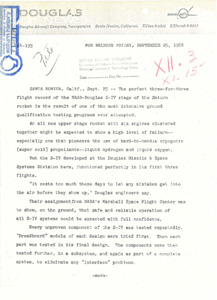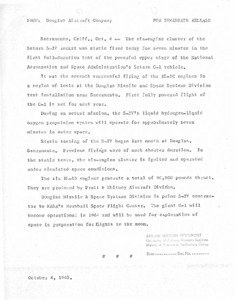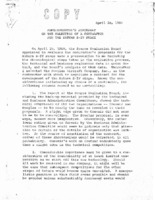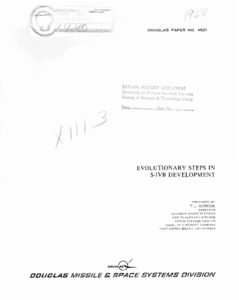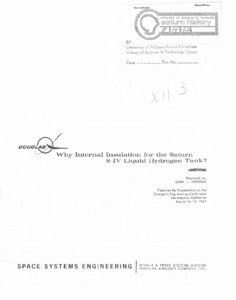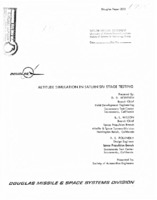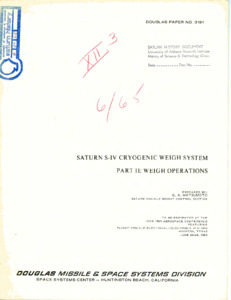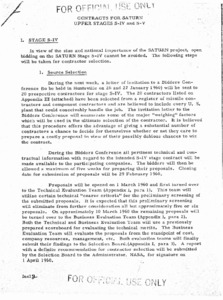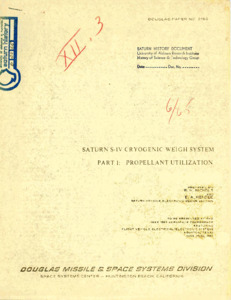
Browse Items (16 total)
Sort by:
-
"Design of the Saturn S-IV Stage Propellant Utilization System."
Describes the SIV vehicle and its components. Presented at: IRE International Convention. -
Douglas Aircraft news release.
ABSTRACT: Discusses intensive ground qualification testing program for S-IV stage. -
"Douglas Aircraft Company Press release."
Press release covering the static firing of the S-IV rocket for a full seven minutes. -
"Evolutionary Steps in S-IVB Development."
The injection stage of a multistage launch vehicle must be partially a velocity stage and partially a spacecraft; it must not only boost the payload, it must also perform cooperative mission operations with the payload after orbital insertion. These hybrid requirements result in intrinsic stage versatility which permits consideration of new and challenging missions for the stage which were unanticipated during initial design.; Prepared by T. J. Gordon, Director, Advance Space Stations and Planetary Systems, Space Systems Center, Douglas Aircraft Company, Huntington Beach, California. -
"Why internal insulation for the Saturn S-IV liquid hydrogen tank?."
Prepared for presentation at the Cryogenic Engineering Conference, Los Angeles, California, August 14-16, 1962.; There is no page 8. -
"Altitude Simulation in Saturn SIV Space Testing."
This paper was presented to the Society of Automotive Engineers. The abstract reads, "The Douglas Aircraft Company has been involved in testing the Saturn SIV stage at the Sacramento Test Center for the past two years. The propulsion system for the SIV stage consists of six (6) Pratt & Whitney Aircraft Company rocket engines which are designed specifically for high altitude start and operation. During static firing tests of this engine at sea level, a steam jet ejector in combination with a diffuser, are used to simulate altitude conditions. The intent of this paper is to examine the performance of this altitude simulation system, and to discuss problems encountered in making it operational." -
"Saturn S-IV cryogenic weigh system. Part II : weigh operations."
Two basic methods for mass determination are: (1) direct measurement, (2) volume and density determination. Both methods or variations have been used to determine space vehicle propellant mass with varying degrees of success. Stringent propellant loading accuracy requirements of k0.5 percent for the Saturn S-IV Stage have led to the development of a Cryogenic Calibration Weigh System. The method employs accurate electronic force transducers and measuring systems as the standard and experimental weighings have verified achievement of better than the required accuracy. -
"Contracts for Saturn Upper Stages S-IV and S-V".
Details contracts for upper stages of Saturn IV and Saturn V and includes illustrative appendixes. Archive copy is a photocopy. -
"Saturn S-IV cryogenic weigh system. Part I : propellant utilization."
In order to achieve maximum vehicle efficiency, it is essential that the vehicle propellants be loaded to desired values and that these propellants approach simultaneous depletion at the end of powered flight. To accomplish precise loading and assure minimum residuals, a highly accurate and repeatable, vehicle located, propellant management (PM) or propellant utilization (PU) system must be used. As the ability to load propellants to predetermined values depends directly on the ability of the system to accurately sense the propellant masses, it is essential that the system be calibrated with respect to propellant mass under conditions resembling those to be experienced during final loading and powered flight. The use of a cryogenic weight system will reduce the unknown factors in capacitance sensor element shaping, tank geometry, and propellant properties to a degree which will permit the determination of propellant masses to with .025%.
